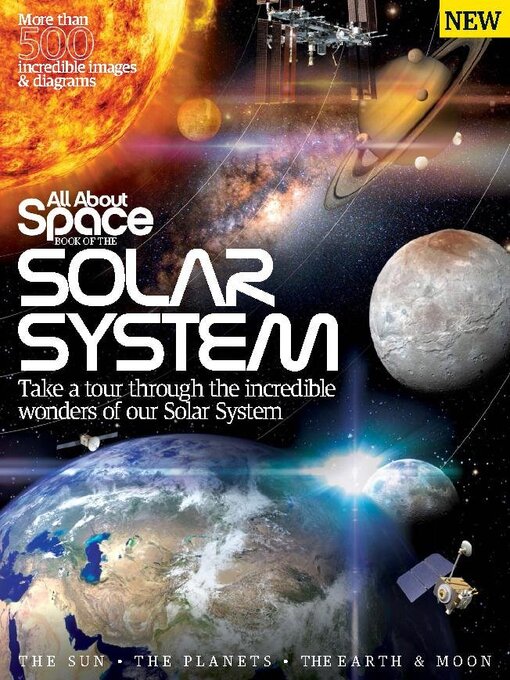Please type the description of the issue
Astronomer Royal • The much-celebrated Astronomer Royal Martin Rees gives some quick answers on some of the most current events in popular astronomy
Birth of the SOLAR SYSTEM • How did our Solar System form? Until recently, astronomers thought they knew. But now, new research is turning many of the old ideas on their heads
LIFE in the SOLAR SYSTEM • Despite acid clouds, molten heat, deadly radiation and bitter cold, could we still be sharing our cosmic neighbourhood?
Planetary habitats
The Sun • Discover the star at the centre of our Solar System
All about… THE SUN • The vast nuclear furnace that we know as the Sun is responsible for dictating the seasons, climate and characteristics of every planet in the Solar System. Here, we take an in-depth look at this source of power that has astounded humanity since the dawn of existence
Solar storms • Like the Earth, the Sun has an atmosphere, but the two are very different. The Sun’s can be incredibly volatile with powerful magnetic activity that causes phenomena referred to as solar storms here on Earth
The solar cycle • Our Sun is ever-changing, affecting all life on Earth and our natural environment
The SOHO mission • The Solar and Heliospheric Observatory was launched in December 1995 and is helping us explore the Sun
Observing the Sun • Humanity has been fascinated by the Sun for thousands of years and even primitive records still prove useful. Discover more about the past, present and future of studying the Sun
The history of observing the Sun
Different ways to observe the Sun
FUSION POWER SUN • Our local star pumps out vast amounts of heat and light, which supports all life on Earth. But where does it come from, and just what happens to it on its journey through the Sun?
Fission versus Fusion
Proton-proton chain fusion • P-p chain fusion actually involves several distinct pathways, but the early steps always involve the fusing of two protons to form a highly unstable isotope called helium-2.
How did our Sun form?
The Sun’s twin star • The most Sun-like star that we know of could kick-start the search for extraterrestrial life in the universe
The universe’s Sun-like stars • Our Sun and its potential solar twins
The Earth & Moon • Understand more about our home planet and its only satellite
All about EARTH • When it comes to studying the planets of the Solar System we often overlook the Earth. However, as the only planet known to be able to support life, there’s still lots to learn about our fascinating home planet
Earth inside and out • How Earth formed into the habitable world we know today
On the surface • Our planet is changing all the time, all the way down to its mantle
Surface features
Why is there life on Earth? • The Earth has the perfect recipe to support life. But why?
5 kingdoms of life
Observing Earth • Checking out our home planet has become easier over time
8 stunning Earth landmarks
OUTPOST EARTH • From spacewalking in water to living in the desert, we look at how astronauts train for the challenges of exploring moons, asteroids and planets on Earth
Hervé Stevenin • EVA and Zero-G instructor for ESA astronauts
Loredana Bessone • CAVES course and mission director
Desert RATS training
Where in the world? • The training facilities across the globe that prepare astronauts for extra-terrestrial expeditions
All about… THE MOON • The Moon is the Earth’s only natural satellite, and the only celestial body that we’ve set foot on other than our own planet. But even though we know more about it than any other...
